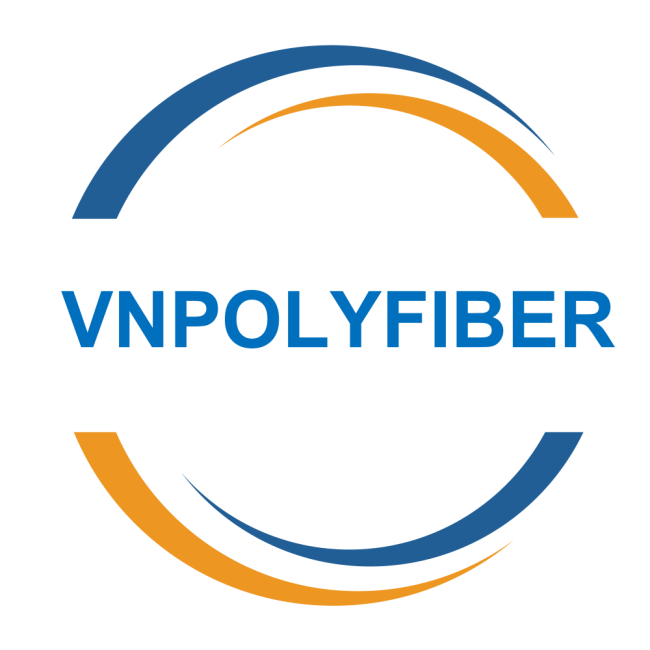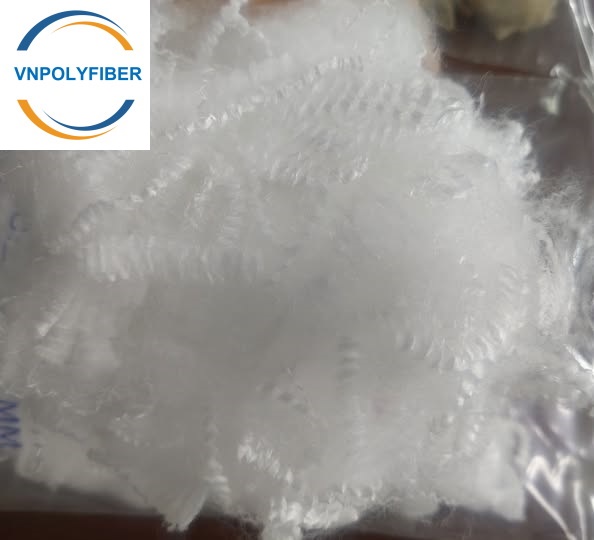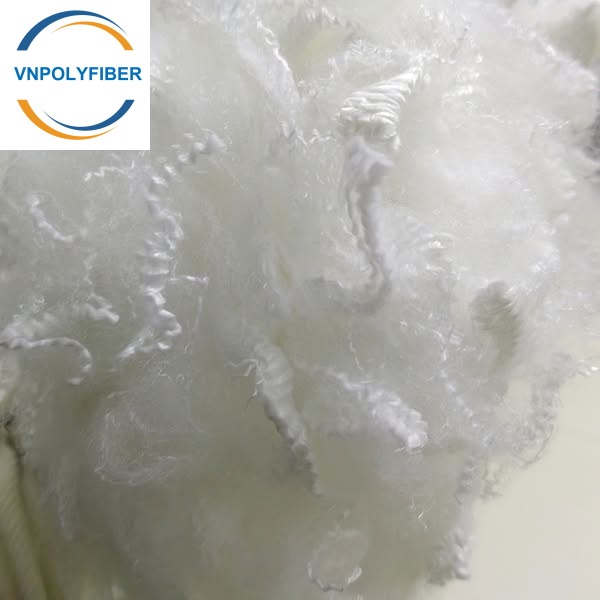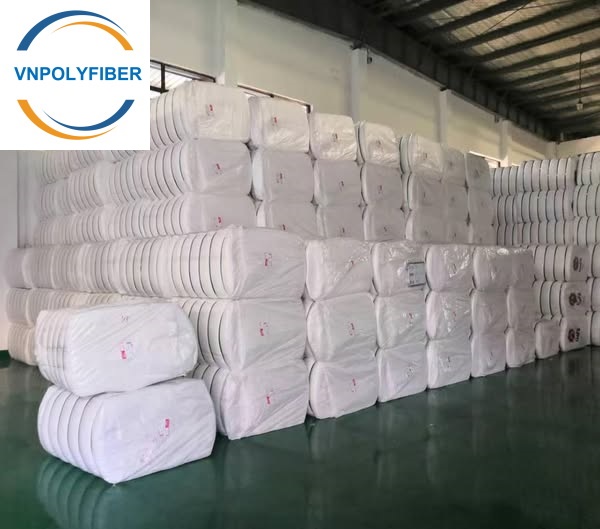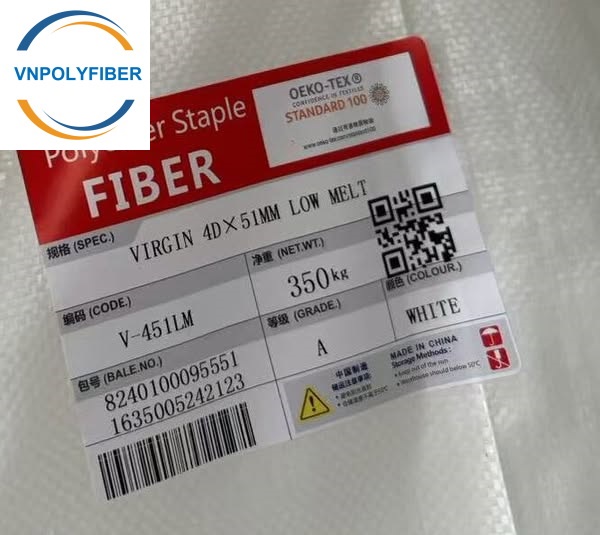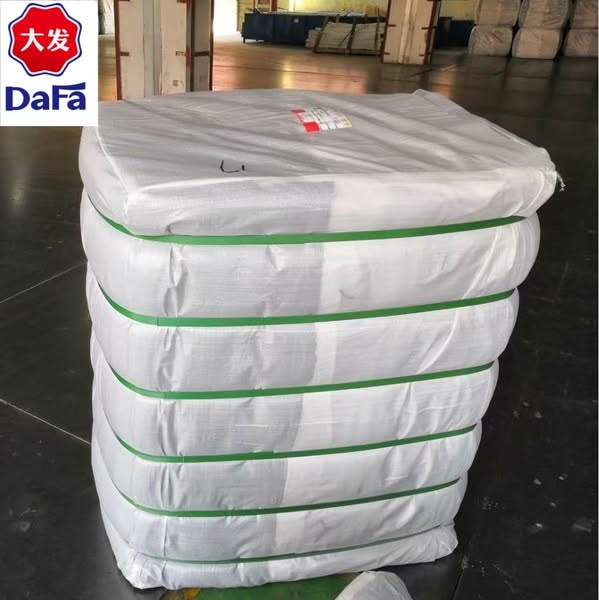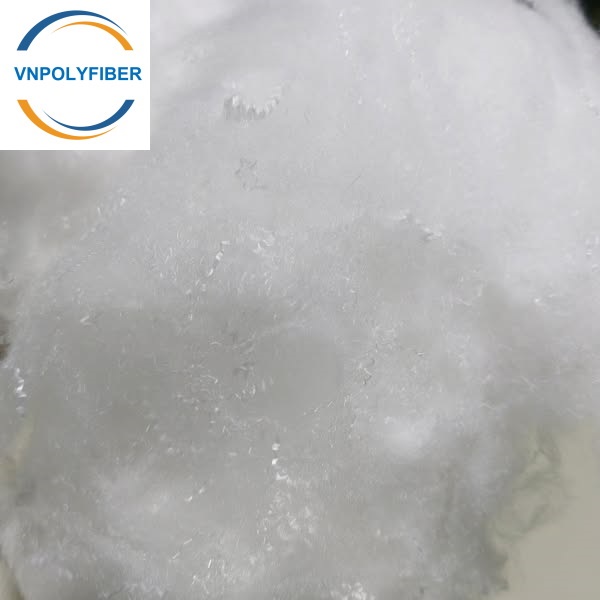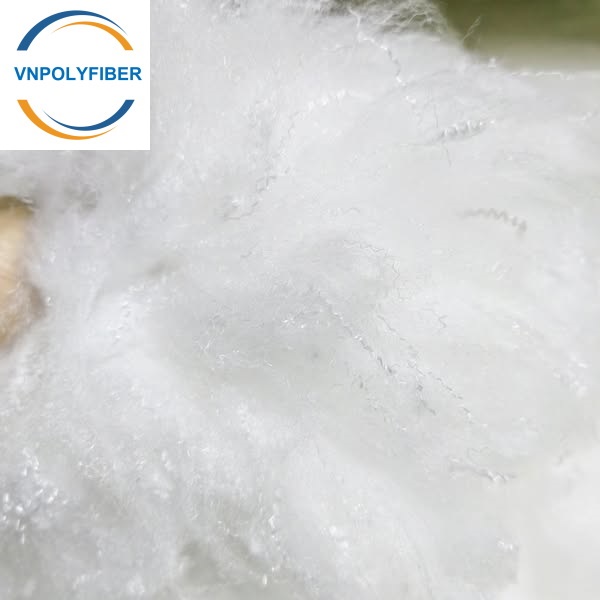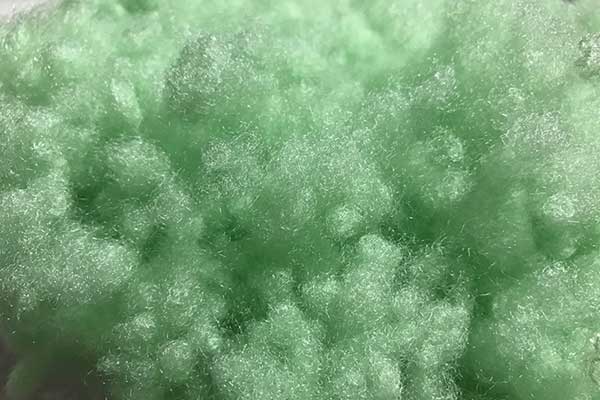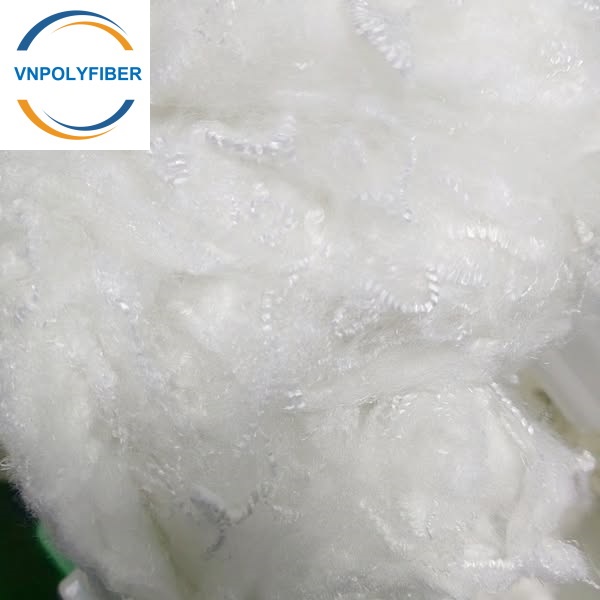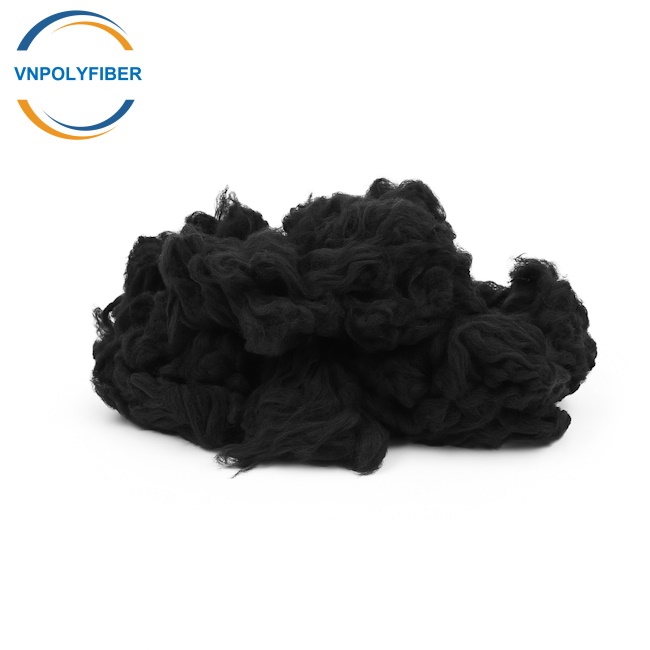Virgin Low Melting Fiber White 4D x 51MM
Low melting fibers, also known as fusible fibers, are a type of synthetic fiber engineered to melt at significantly lower temperatures than conventional fibers like standard polyester. This unique property makes them invaluable in various industries, acting as a thermal bonding agent without the need for traditional adhesives. This eliminates the use of chemical binders, promoting a more environmentally friendly and sustainable manufacturing process.
PRODUCT DETAIL
What is Low Melting Fiber?
Low melting fibers, also known as fusible fibers, are a type of synthetic fiber engineered to melt at significantly lower temperatures than conventional fibers like standard polyester. This unique property makes them invaluable in various industries, acting as a thermal bonding agent without the need for traditional adhesives. This eliminates the use of chemical binders, promoting a more environmentally friendly and sustainable manufacturing process.
The Science Behind Low Melting Fibers
Typically, low melting fibers are bicomponent fibers, meaning they consist of two different polymers extruded together. One polymer has a lower melting point, forming the sheath, while the other has a higher melting point, forming the core. When heated, the sheath melts and bonds with adjacent fibers, creating a strong, cohesive structure. The core maintains the structural integrity of the fiber, preventing complete melting.
Common polymer combinations include:
- Co-polyester/Polyester (CoPET/PET): This is a prevalent combination, offering excellent bonding strength and durability.
- Polypropylene/Polyethylene (PP/PE): Used in applications where flexibility and moisture resistance are crucial.
The precise melting point of the sheath polymer is carefully controlled during manufacturing, allowing for tailored bonding properties.
Applications in Car Interiors
The automotive industry has embraced low melting fibers for their ability to create lightweight, durable, and aesthetically pleasing interior components.
- Headliners: Low melting fibers are used to bond the fabric facing to the foam backing of headliners. This eliminates the need for adhesives, reducing VOC emissions and improving air quality inside the vehicle. The resulting headliner is also more resistant to delamination and sagging.
- Door Panels: Similar to headliners, low melting fibers bond the fabric or leather covering to the molded substrate of door panels. This creates a smooth, seamless finish and enhances the overall durability of the panel.
- Carpets and Floor Mats: Low melting fibers are used to bond the carpet pile to the backing, creating a strong, wear-resistant floor covering. They can also be used in molded carpets, allowing for complex shapes and designs.
- Seat Covers: Low melting fibers can be incorporated into nonwoven fabrics used as seat cover backings, providing added stability and durability.
- Acoustic Insulation: Due to the ability to create bulky and stable nonwoven structures, low melting fibers are used for sound dampening in various areas of the vehicles.
Advantages in Car Interiors:
- Lightweighting: Reducing the weight of interior components improves fuel efficiency and reduces emissions.
- Improved Durability: Thermal bonding creates a strong, long-lasting bond, enhancing the lifespan of interior components.
- Enhanced Aesthetics: Low melting fibers allow for smooth, seamless finishes and complex designs.
- Reduced VOC Emissions: Eliminating adhesives minimizes the release of volatile organic compounds, improving air quality inside the vehicle.
- Recyclability: Using a singular polymer type, or compatible polymer combinations, improves the ability to recycle the interior parts.
Applications in Furniture
Low melting fibers play a crucial role in furniture manufacturing, offering a sustainable and efficient alternative to traditional bonding methods.
- Upholstery: Low melting fibers are used to bond fabric to foam or other padding materials, creating a smooth, wrinkle-free finish. They also enhance the durability and longevity of upholstery.
- Mattress Ticking: Low melting fibers are used to bond the ticking fabric to the quilting, creating a stable and comfortable sleep surface.
- Furniture Padding: Low melting fiber blended nonwovens are used to create padding that provides shape and support to furniture pieces.
- Nonwoven interlinings: Low melting fibers bond interlinings to the outer fabric, giving furniture added stability and structure.
Advantages in Furniture:
- Improved Comfort: Thermal bonding creates a smooth, even surface, enhancing comfort.
- Increased Durability: Strong, durable bonds extend the lifespan of furniture.
- Reduced Production Costs: Eliminating adhesives reduces material costs and simplifies the manufacturing process.
- Environmental Friendliness: Reduced VOC emissions and the potential for recycling contribute to a more sustainable furniture industry.
Applications in Nonwoven Fabrics
Low melting fibers are essential in the production of various nonwoven fabrics, offering a versatile bonding solution.
- Filtration Media: Low melting fibers create highly efficient filtration media for air and liquid filtration.
- Geotextiles: They are used in geotextiles for soil stabilization, erosion control, and drainage applications.
- Hygiene Products: Low melting fibers are used in diapers, feminine hygiene products, and other absorbent products.
- Medical Textiles: They are used in medical textiles for wound dressings, surgical gowns, and other applications.
- Automotive Interiors: As previously detailed.
- Construction: They are used in roof underlayments, and insulation.
Advantages in Nonwoven Fabrics:
- Versatility: Low melting fibers can be used to create a wide range of nonwoven fabrics with tailored properties.
- Cost-Effectiveness: Thermal bonding eliminates the need for expensive adhesives
- Enhanced Strength and Durability: Thermal bonds create strong, durable nonwoven fabrics.
- Improved Filtration Efficiency: Low melting fibers can create highly efficient filtration media.
- Customizable Properties: The properties of nonwoven fabrics can be tailored by adjusting the type and amount of low melting fiber used.
Environmental Considerations
The use of low melting fibers offers several environmental advantages:
- Reduced VOC Emissions: Eliminating adhesives minimizes the release of harmful VOCs.
- Energy Efficiency: Thermal bonding requires less energy than traditional bonding methods.
- Recyclability: Using compatible polymers improves the recyclability of finished products.
- Sustainable Materials: The availability of bio-based low melting fibers further enhances sustainability.
In conclusion, low melting fibers are a versatile and sustainable material that is transforming the automotive, furniture, and nonwoven fabric industries. Their unique bonding properties offer numerous advantages, including improved durability, enhanced aesthetics, reduced production costs, and environmental friendliness. As technology advances, the applications of low melting fibers are expected to expand further, contributing to a more sustainable and efficient future.
Technical Parameter
PET/COPET Low Melt Fiber
- Before Heating

- After Heating

- ES fiber is a bi-component fiber composed of low melt PE and hydrophobic PP which has excellent adhesion through core-sheath spinnerets.
- The fibers are widely applied for non-woven applied to mask, protective clothing, sanitary pad, diapers.
Video
FAQ
1. What do you offer?
We produce recycled hollow conjugated siliconized and non-siliconized polyester staple fiber mainly, we can make hollow fiber (HS/ HD) and virgin polyester staple fiber HCS as well.
2. What is it used for?
Our fiber is widely used in filling, non-woven fabric
3. Are you a factory or a trading company?
We are a factory specialized in polyester staple fiber for many years but now we also have our own professional trading company. We will source many types of textile products such as yarn, PP fibers from others to supply our own customers as well. We also provide our own customers with other related products such as: Foam, Pillows, Cushions, Toys, Down/ Feather,…
4. Where is your factory location?
Our factory locates in the north and the south of Vietnam. You can visit us from Ho Chi Minh City and Hanoi City, Vietnam. You could contact our salesman to fetch you if visiting.
5. Can you accept free sample?
Yes, the hand sample is free when not exceed 1 kilograms. Upon price confirmation, we will provide a sample within 2-3 days; the freight cost will be charged to client.
6. Can you provide ODM service?
Yes, we work on ODM orders. Which means size, material, quantity, design, packing solution, etc, will depend on your requests, and your logo will be customized on our products.
7. How about your quality? What’s the minimum order Quantity (MOQ)?
Please try a trial order, you will know it. The MOQ is 23,000 Kilograms/order, but the price will be lower if you order bulk volume.
8. Can I mix different items in one order?
Sure, you can mix any products we can provide.
9. How can you guarantee the product quality?
We have experienced QC team. We control not only productive process but also raw material. In addition, we have different kinds of testing instrument to help us guarantee the product quality.
10. What’s the payment terms?
L/C at sight, 30% TT in advance are mostly accepted; other terms shall be negotiable by both sides
For more information, please feel free to contact :
Mr. Tony Tan
Mobile number: +84 90 466 5251 (Whatsapp/Wechat/Viber/Signal)
